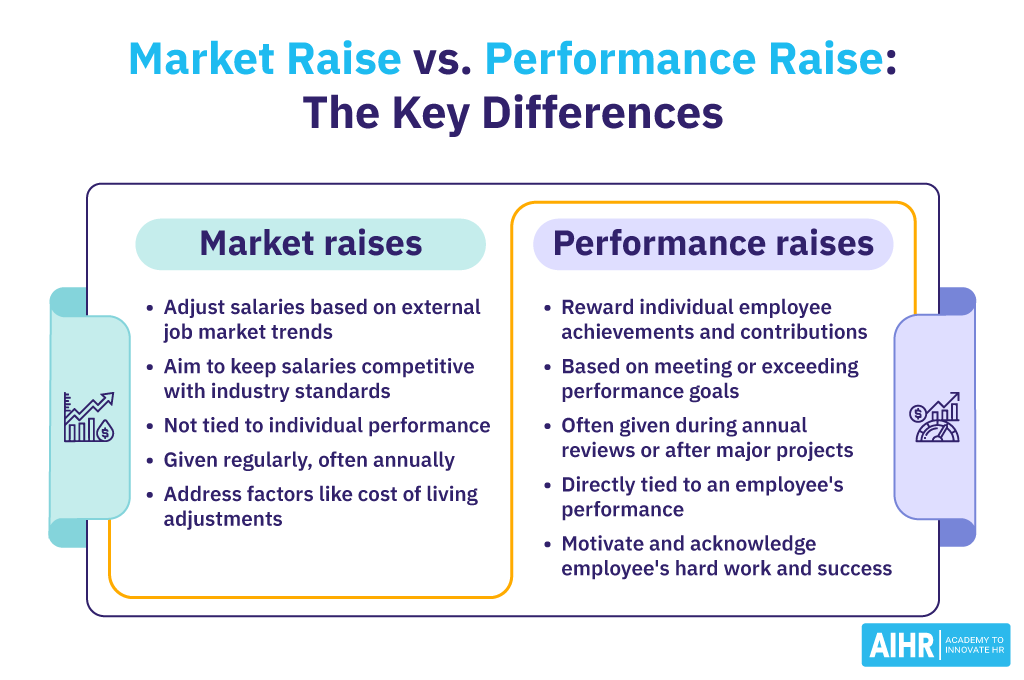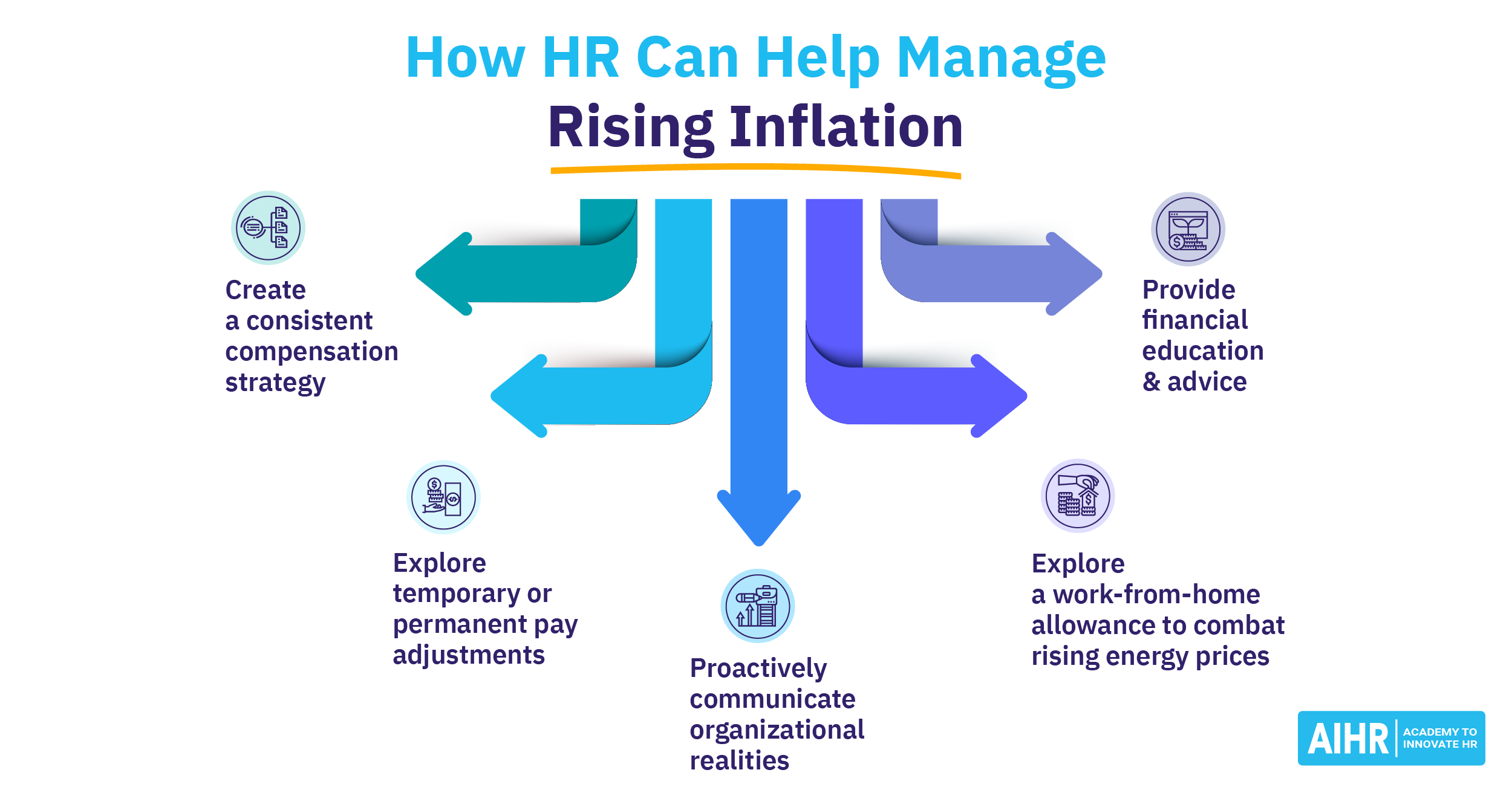Market Adjustment Raise
What is a market adjustment raise?
A market adjustment raise is a salary increase based on industry-wide compensation levels, aiming to match the pay rates of other companies in the industry. Organizations typically provide a market rate adjustment so that salaries are competitive to attract and retain talent. For example, a UX designer may receive a market adjustment raise after industry data reveals a high demand and talent shortage of UX professionals.
There is no set time of the year for market adjustment raises, as they usually depend on industry trends, market changes, and competitor strategies. However, some organizations offer market adjustment raises during annual performance or compensation reviews to ensure employees’ salaries remain fair and competitive.
Market raise vs performance raise
| Market raise | Performance raise | |
| Purpose | Close gap between an employee’s current salary and the market value of their position. | Recognize and reward employees for exceeding expectations. |
| Timing | Variable, depending on market changes, industry trends, attraction & retention strategies. | Linked to a company’s performance review schedule or reaching specific goals/milestones.. |
| Focus | Broad focus on specific roles. | Individual focus on achievements. |
| Budgeting | Might encounter budgetary constraints, as can entail unexpected market/industry shifts | Typically, budgeted in advance. |
| Impact | Can improve talent attraction and retention. | Known to increase motivation and engagement. |

How much is a market adjustment raise?
Market adjustment raises vary depending on a wide range of factors, such as specific industries, location, cost of living, or talent shortages. These adjustment raises are closely connected to annual compensation budget rates. For instance, in 2024, U.S. companies are planning annual salary increases of 4%. However, market rate adjustments could be higher than this depending on the position and industry, like the tech or finance industry.
Challenges in implementing a market adjustment raise
Market adjustment raises often depend on a complex mix of factors, including:
- Reliable data: Aligning external data from salary surveys with internal organizational needs can be challenging. This is especially true since specific job roles and responsibilities can vary across companies and differ from external forecasts. For example, external salary data for a software engineer might exceed the specific responsibilities of engineers in your company.
- Pay inequity: Making market adjustments for certain roles may widen the pay gap internally, causing pay equity concerns. It could also lead to low employee morale among employees not eligible for market adjustment raises.
- Budget constraints: Rapid or unexpected market changes can make it difficult to effectively budget for market adjustment raises. For example, a sudden demand for data scientists can prevent companies from offering competitive salaries to attract (and retain) a much-needed source of talent.
- Tax issues: Certain market rate adjustments can have different tax implications, such as increasing payroll taxes and negatively impacting tax deductions – especially for large companies. These tax implications can also increase the administrative burden for HR departments.
How can HR communicate a market adjustment raise?
An effective communication approach is crucial before communicating market adjustment raises to employees. HR should ensure it includes the following steps:
- Explain the rationale behind the adjustments: Ensure you share market data, industry trends, and any other supporting factors used for market raises for specific roles affected.
- Develop a targeted communication plan: Decide on tailored messages for key audiences for senior leaders (focusing on the strategic link with talent attraction and retention), managers (providing specific details about which team member roles will be affected), employees (explaining the specifics of their personal salary adjustment).
- Plan communication well in advance: If possible, communicate the plans for market adjustment raises beforehand. This will give employees time to adjust and ask questions.
- Personally inform employees: It’s highly recommended to inform employees in person of any market rate adjustments that impact their salary. If not possible, especially in large organizations, HR can communicate through group sessions, virtual Q&As, or team meetings.
- Provide resources: Prepare FAQs, fact sheets, and any other online guides that clearly answer questions about the market adjustment raises and any impact on taxes and benefits. Make sure employees can access tailored communication to their specific role or situation for the ultimate transparency.
- Offer support: To prevent confusion, misunderstandings, and disengagement, keep the lines of communication open for employees who may need extra support understanding compensation changes. This is especially true when the change is unexpected or disappointing.
FAQ
A market adjustment raise is an increase in an employee’s salary to be more aligned with the current rate of what similar roles are usually paid. The exact increase is often based on industry trends and data from salary surveys or reports. The purpose of a market rate adjustment is to ensure employees are paid fair and competitive salaries. It often depends on specific skills and expertise, location, and experience.
An adjustment increase is any rise in an employee’s salary or overall compensation package. Although a market adjustment raise is an example of an adjustment increase, it goes beyond salary increases based on market trends. Some common examples of an adjustment increase include cost-of-living adjustments, promotions, performance-based bonuses, and company achievements.







